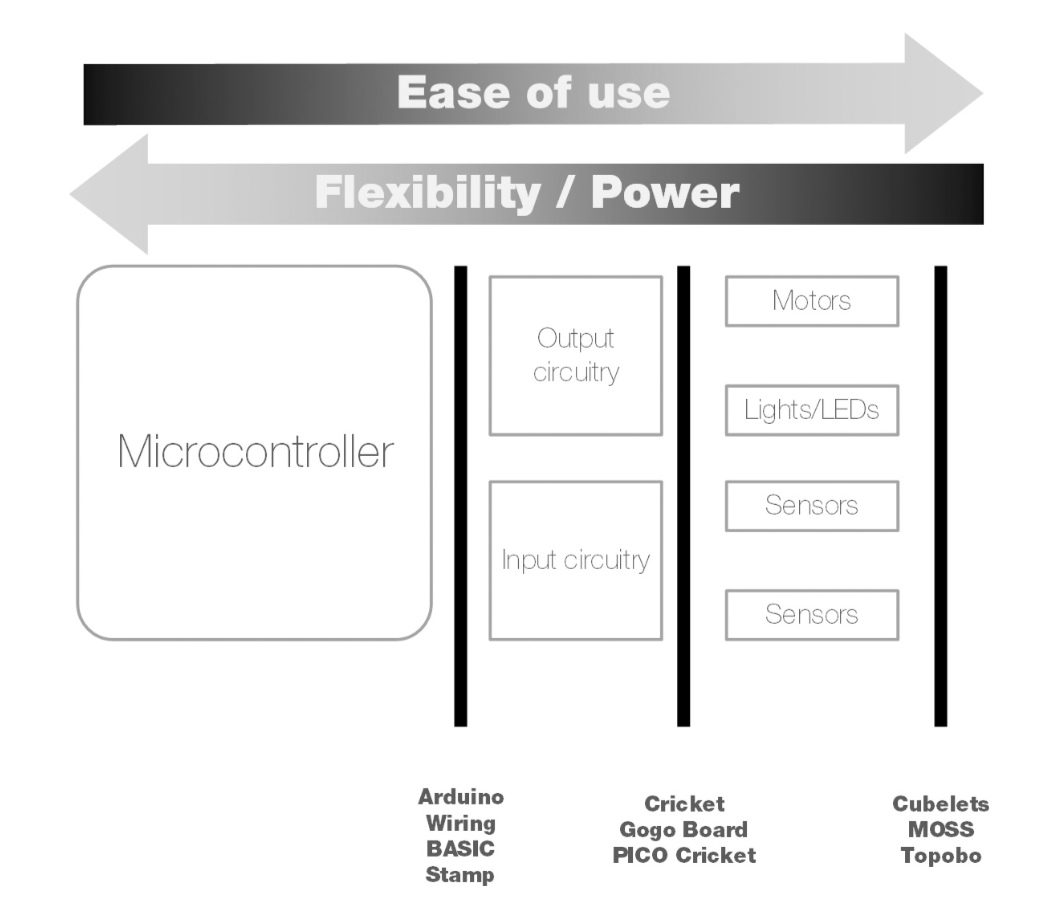Blikstein, 2015. Computationally Enhanced Toolkits for Children: Historical Review and a Framework for Future Design, Stanford University, USA
The generations of microcontrollers
- The first generation: Pioneers of physical computing (LEGO/Logo, Braitenberg Bricks, and Programmable Bricks)
- The second generation: Conquering the World (Crickets,Programmable Bricks, and BASIC Stamp)
- The Third Generation: Broadening Participation and Accessing New Knowledge Domains (GoGo Board, Phidgets,Wiring,andArduino)
- The Fourth Generation: New form factors, new architectures, and new industrial design (Pico Cricket, Lilypad, Topobo, Cubelets, LittleBits)
- The Fifth Generation: Single board computers (RaspberryPi, PCDuino, BeagleBoard)

- Selective exposure for usability: Embedded error correction
- Selective exposure for power: Tangibility mapping
- “The main construct proposed in this monograph (selective exposure) and its two subcategories (embedded error correction and tangibility mapping) could help understand the use of current products and give designers a framework to imagine new ones.” (Blikstein, 2015)
Horn, M. S. (2013, February). The role of cultural forms in tangible interaction design. InProceedings of the 7th International Conference on Tangible, Embedded and Embodied Interaction(pp. 117-124). ACM.
“In this paper I have proposed an approach to tangible interaction design that looks beyond physical analogies and universal sensorimotor experiences. Specifically, I have argued that designers can purposefully evoke cultural forms as a means to activate existing patterns of social activity along with associated cognitive, physical, and emotional resources. This approach to design was inspired by the notion of social and cultural funds of knowledge [8, 18] and by Saxe’s form-function shift framework [30, 31]. Using three examples I demonstrated what this might look like in action.”